by Lorri | Dec 22, 2010 | UnCorked
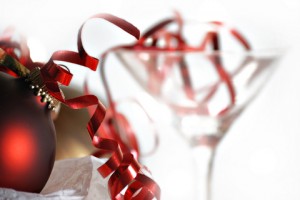 During the Christmas season I am always looking for ways to ease the stress of my party planning. Choosing the wine – whether you are planning a large cocktail party or intimate dinner – shouldn’t be the most complicated part of your planning. With just a few helpful tips, your wine choices can be the most effortless part of your party planning.
During the Christmas season I am always looking for ways to ease the stress of my party planning. Choosing the wine – whether you are planning a large cocktail party or intimate dinner – shouldn’t be the most complicated part of your planning. With just a few helpful tips, your wine choices can be the most effortless part of your party planning.
Start with the amount of wine you will need. Ask any host or hostess who has had to rush out to the retail store or a neighbor’s house in the middle of the party – don’t be afraid to overbuy. A safe rule of thumb is one 750-ml bottle will equal about 5 (5-ounce) glasses. You can never buy too much – after all, there’s always the next party – and remember, running out of wine or food can swiftly turn a festive mood into a restive one.
Know your budget. If it’s a large cocktail party, choose a wine that sells in the $8 to $12 range. Retailers often offer party-season specials and discounts on quality wines this time of year. For a dinner party, always consider this sound advice: Spend as much as you can afford. If you’ve slaved in the kitchen preparing luscious appetizers, entrees and desserts,be sure to showcase the meal with the best wine your budget will allow.
Once the quantity and budget are in place, give some thought to other details. Keeping white wines chilled when refrigerator space is tight can be a challenge for large parties. Large plastic tubs filled with ice can do the job, or fill one side of the kitchen sink with ice. If you worry about red wine spills, have a bottle of Wine Away stain remover on hand. It’s inexpensive and easily removes those dreaded stains.
And finally, the most important host responsibility: Call a taxi for anyone overindulging in the festivities who doesn’t have a designated driver.
THE VALUES
- 2009 Brancott SauvignonBlanc, New Zealand (about $14 retail)
- 2009 Oroya Tierra de Castilla, Spain (about $11 retail)
- 2009 Concha y Toro Xpolorado Chardonnay, Chile (about $9 retail)
THE SPLURGES
- 2009 Hugel Pinot Gris, France (about $20 retail)
- 2009 Montinore Estate Gewurztraminer, Oregon (about $19 retail)
- 2009 Mt. Difficulty Sauvignon Blanc , New Zealand (about $22 retail)
by Lorri | Dec 15, 2010 | UnCorked
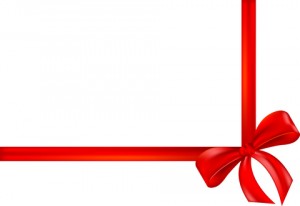 The official Christmas shopping rush is well under way – a dreaded experience for some, a joy for others. Knowing your recipient appreciates wine makes for an easy list of ideas, and having the option of shopping in your pajamas is a perfect solution for those wanting to avoid traffic and crowds.
The official Christmas shopping rush is well under way – a dreaded experience for some, a joy for others. Knowing your recipient appreciates wine makes for an easy list of ideas, and having the option of shopping in your pajamas is a perfect solution for those wanting to avoid traffic and crowds.
With online shopping you can compare prices with the click of a button and search out the best values. Over the next few weeks, many sites will offer sale prices and “online only” deals for easy savings. Add convenient around-the-clock shopping hours and front-door delivery and you are almost finished checking off your list.
But, online shopping for a wine lover in Arkansas has its downside, as alcoholic beverages cannot be bought online in the Natural State, so shopping is limited to wine accessories.
To avoid shipping costs, some stores offer online viewing or ordering and in-store pickup.
THE VALUES
THE SPLURGES
by Lorri | Dec 8, 2010 | UnCorked
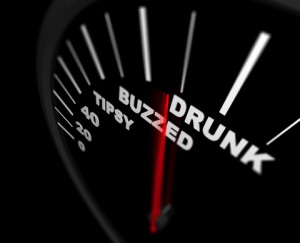 If there’s one time of year when people indulge in alcohol more frequently it’s during the December holidays of Hanukkah, Christmas and New Year’s Eve. Holiday cheer brings countless parties where drink glasses magically stay filled.
If there’s one time of year when people indulge in alcohol more frequently it’s during the December holidays of Hanukkah, Christmas and New Year’s Eve. Holiday cheer brings countless parties where drink glasses magically stay filled.
Many of our favorite big, bold cabernet sauvignons and oaky chardonnays can easily have 15 percent alcohol or higher. For an alternative, consider wines with lower alcohol, in the 11 percent to 13 percent range. One or 2 percent may not sound like much of a difference but on occasions when one or more glasses will be consumed it can be the difference between a fun evening and an overindulging flop.
To illustrate the point, in a February 2009 Forbes article lower alcohol wines were discussed with doctor and wine writer William “Rusty” Gaffney. He took a Breathalyzer test after drinking low- and high-alcohol wines. The 5-foot-9-inch, 178-pound Gaffney found that after “two glasses of 12 1/2 percent alcohol wine, on an empty stomach, his blood alcohol was .05 after an hour; after two glasses of a 15 percent wine, he was over the legal driving limit of .08 after an hour.”
There are many lower alcohol brands and varietals available that are appropriate for entertaining. Other ways to reduce alcohol consumption include making sure water and other nonalcoholic drinks are available, using smaller wine glasses and not topping off guests’ glasses throughout the party.
THE VALUES
- 2009 Whitehall Lane Sauvignon Blanc, California (about $16 retail)
- 2009 Broadbent Vinho Verde, Portugal (about $13 retail)
- 2009 Stella Rosa Rosso, Italy (about $13 retail)
- 2009 Stella Rosa Bianco, Italy (about $13 retail)
THE SPLURGES
- 2008 Pascal Jolivet “Attitude” Sauvignon Blanc, France (about $24 retail)
- NV J Brut Sparkling Wine, California (about $35 retail)
- NV Roederer Sparkling Wine, California (about $35 retail)
by Lorri | Nov 17, 2010 | UnCorked
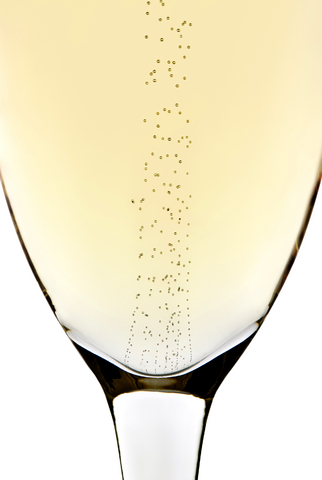 Finding the ideal Thanksgiving wine can be hit or miss, with an array of flavors — turkey, coconut fruit salad, sweet potato casserole, mashed potatoes — all vying for the spotlight. With all of these dishes competing for the grandeur, it’s asking a lot for a single wine to match perfectly with all of our Thanksgiving favorites. So when it comes to Thanksgiving wine, think versatility.
Finding the ideal Thanksgiving wine can be hit or miss, with an array of flavors — turkey, coconut fruit salad, sweet potato casserole, mashed potatoes — all vying for the spotlight. With all of these dishes competing for the grandeur, it’s asking a lot for a single wine to match perfectly with all of our Thanksgiving favorites. So when it comes to Thanksgiving wine, think versatility.
There are many wines that can manage this clash of food flavors, weights and textures. Sparkling wine and Champagne are among the most versatile, and popping a bottle of bubbly is the ideal start for your Thanksgiving Day celebration. These wines work not only for toasting but have more food-friendly characteristics than other wines, allowing you to serve them throughout appetizers, dinner and even dessert.
But if non-bubbly is desired, there are options.
For white wines, Riesling is always a favorite, with its dry, light refreshing characteristics. This grape produces many styles and levels of sweetness. Choose a German “Kabinett” or dry style from California or Australia to better complement the food flavors. Gewurztraminer’s light-bodied texture and spicy taste is a good match for the range of flavors on a buffet table. A tried and true expression of this grape is produced in France’s Alsace region, with an aromatic, clean, light-bodied style.
The key when choosing a red wine is selecting a wine with low amounts of tannin. Pinot noir, Syrah and merlot are excellent accompaniments.
THE VALUES
- NV Gruet Blanc de Blanc Sparkling Wine, New Mexico (about $25 retail)
- 2007 Hayman & Hill Santa Barbara Pinot Noir, California (about $14 retail)
- 2009 Rosemount Riesling, Australia (about $10 retail)
- 2007 E. Guigal Cotes du Rhone Rouge, France (about $18 retail)
- 2008 Estancia Pinot Noir, California (about $16 retail)
THE SPLURGES
- 2008 St. Supery Napa Valley Merlot, California (about $34 retail)
- NV Jean Laurent Blanc de Blanc Champagne, France (about $55 retail)
- NV Argyle Brut Sparkling Wine, California (about $35 retail)
- 2007 Hugel Gewurztraminer, France (about $34 retail)
- 2006 Bell Big Guy Red, California (about $26 retail)
by Lorri | Nov 10, 2010 | UnCorked
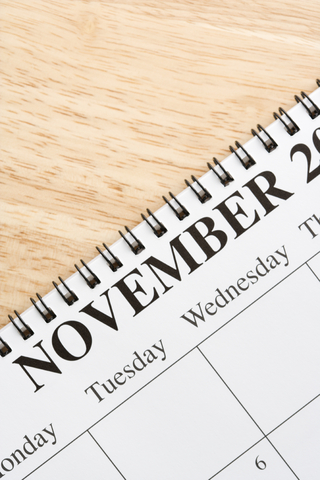 Hunting season is a much-anticipated time of year for many in the South. I frequently receive e-mails asking about pairing wine with wild game. Here are a few easy tips to keep in mind for pairing wines with your catch of the season.
Hunting season is a much-anticipated time of year for many in the South. I frequently receive e-mails asking about pairing wine with wild game. Here are a few easy tips to keep in mind for pairing wines with your catch of the season.
Deer, elk, caribou and moose: Venison is now thought of as primarily deer meat, though it can be the flesh of any game animal. Venison is leaner than domestic meat and often has a distinct, hearty flavor (the term “gamy” is sometimes used). It can be compared with beef dishes like steak or hearty stew, which are consumed with heavier red wines. A good rule is to pair game with a wine that shares the same intensity as the dish. A California zinfandel or pinot noir, France’s Cote de Rhone, Chilean merlot or French Bordeaux are good choices.
THE VALUES
- 2008 Santa Rita Merlot, Chile (about $12 retail)
- 2008 Mark West Pinot Noir, California (about $14 retail)
- 2008 Angeline by Martin Ray Pinot Noir, California (about $17 retail)
THE SPLURGES
- 2008 Renwood Old Vine Zinfandel, California (about $22 retail)
- 2008 Siduri Sapphire Hill Russian River Pinot Noir, California (about $56 retail)
- 2006 Chateau St. Sulpice Bordeaux, France (about $20 retail)
Duck, turkey, quail and pheasant: These birds generally have earthy flavors that are much bolder than chicken.
Because of this stronger flavor, a red wine can be an ideal match. A few varietals to consider are shiraz, zinfandel, pinot noir, grenache or tempranillo. When a white wine is called for, consider heavier and full-bodied wines such as chardonnay or Riesling.
THE VALUES
- 2007 Bogle Chardonnay, California (about $12 retail)
- 2008 Concannon Pinot Noir, California (about $12 retail)
- 2008 La Playa Chardonnay, Chile (about $12 retail)
THE SPLURGE
- 2008 Gemtree Uncut Shiraz, Australia (about $36 retail)
- 2008 Turkey Flat Grenache, Australia (about $38 retail)
- 2008 Justin Vineyards Chardonnay, California (about $26 retail)
by Lorri | Nov 3, 2010 | UnCorked
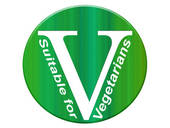 When most people think of wine, they think grapes plus fermentation equal wine. But a stage in winemaking could actually be a dilemma for vegetarians and vegans.
When most people think of wine, they think grapes plus fermentation equal wine. But a stage in winemaking could actually be a dilemma for vegetarians and vegans.
Before bottling, winemakers generally choose to clarify and stabilize the wines in a process called fining. Skipping this step may result in wine that is hazy or has loose sediment floating around in it. Many of the main fining agents are animal-based products such as egg whites, milk, casein, gelatin and isinglass (fish bladders) or clay-derived bentonite.
During this process, what was used for fining is added to the wine. As it settles into the fermented wine, the particles adhere to the agent and drop to the bottom. Of course, the products used in fining do not remain in the wine and are sterilized into the bottle; some wines use no fining process at all.
The dilemma for most vegetarians and vegans? There is no obligation for wineries, restaurants or retailers to state if animal-based fining agents were used. But today the industry is becoming easier to navigate with many companies clearly stating on labels if the wine is suitable for vegetarians or vegans (vegan VG, vegetarian V) and a vast array of websites offering recommendations for these wines.
Considered the innovators, many wineries are producing “unfiltered” wines. This slower and more traditional method is gaining a lot of attention from those seeking more natural options. This method allows wines to settle naturally and even with a slight cloudiness or remaining sediment, has consumers understanding it’s not an indicator of quality but a winemaking choice.
Keep in mind companies’ winemaking methods will vary year to year, so to be sure the wines are suitable for your diet it’s best to call or e-mail the winery.
THE VALUES
- 2009 Frey Organic Cabernet Sauvignon, California (about $22 retail)
- 2009 Bonterra Vineyards Chardonnay, California (about $16 retail)
- 2006 Campo Viejo Crianza, Spain (about $15 retail)
- 2009 Hardys Nottage Hill Shiraz, Australia (about $12 retail)
- 2004 Peter Lehmann Clancy’s Red, Australia (about $22 retail)
THE SPLURGES
- NV Laurent Perrier Champagne, France (about $68 retail)
- 2007 Recanati Merlot, Israel (about $23 retail)
- NV Mumm Napa Brut Rose, California (about $40 retail)
 During the Christmas season I am always looking for ways to ease the stress of my party planning. Choosing the wine – whether you are planning a large cocktail party or intimate dinner – shouldn’t be the most complicated part of your planning. With just a few helpful tips, your wine choices can be the most effortless part of your party planning.
During the Christmas season I am always looking for ways to ease the stress of my party planning. Choosing the wine – whether you are planning a large cocktail party or intimate dinner – shouldn’t be the most complicated part of your planning. With just a few helpful tips, your wine choices can be the most effortless part of your party planning. The official Christmas shopping rush is well under way – a dreaded experience for some, a joy for others. Knowing your recipient appreciates wine makes for an easy list of ideas, and having the option of shopping in your pajamas is a perfect solution for those wanting to avoid traffic and crowds.
The official Christmas shopping rush is well under way – a dreaded experience for some, a joy for others. Knowing your recipient appreciates wine makes for an easy list of ideas, and having the option of shopping in your pajamas is a perfect solution for those wanting to avoid traffic and crowds. If there’s one time of year when people indulge in alcohol more frequently it’s during the December holidays of Hanukkah, Christmas and New Year’s Eve. Holiday cheer brings countless parties where drink glasses magically stay filled.
If there’s one time of year when people indulge in alcohol more frequently it’s during the December holidays of Hanukkah, Christmas and New Year’s Eve. Holiday cheer brings countless parties where drink glasses magically stay filled. Finding the ideal Thanksgiving wine can be hit or miss, with an array of flavors — turkey, coconut fruit salad, sweet potato casserole, mashed potatoes — all vying for the spotlight. With all of these dishes competing for the grandeur, it’s asking a lot for a single wine to match perfectly with all of our Thanksgiving favorites. So when it comes to Thanksgiving wine, think versatility.
Finding the ideal Thanksgiving wine can be hit or miss, with an array of flavors — turkey, coconut fruit salad, sweet potato casserole, mashed potatoes — all vying for the spotlight. With all of these dishes competing for the grandeur, it’s asking a lot for a single wine to match perfectly with all of our Thanksgiving favorites. So when it comes to Thanksgiving wine, think versatility. Hunting season is a much-anticipated time of year for many in the South. I frequently receive e-mails asking about pairing wine with wild game. Here are a few easy tips to keep in mind for pairing wines with your catch of the season.
Hunting season is a much-anticipated time of year for many in the South. I frequently receive e-mails asking about pairing wine with wild game. Here are a few easy tips to keep in mind for pairing wines with your catch of the season. When most people think of wine, they think grapes plus fermentation equal wine. But a stage in winemaking could actually be a dilemma for vegetarians and vegans.
When most people think of wine, they think grapes plus fermentation equal wine. But a stage in winemaking could actually be a dilemma for vegetarians and vegans.